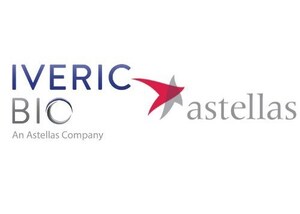Astellas Submits Supplemental New Drug Application to FDA for Tarceva® as a First-Line Therapy in Genetically Distinct Form of Non-Small Cell Lung Cancer
NORTHBROOK, Ill., Nov. 20, 2012 /PRNewswire/ -- Astellas Pharma US, Inc. ("Astellas"), a U.S. subsidiary of Tokyo-based Astellas Pharma Inc. (Tokyo: 4503), today announced it has submitted a supplemental New Drug Application (sNDA) to the U.S. Food and Drug Administration (FDA) seeking approval for Tarceva® (erlotinib) tablets for first-line treatment of patients with locally advanced or metastatic non-small cell lung cancer (NSCLC) whose tumors have epidermal growth factor receptor (EGFR) activating mutations as detected by an approved test.
The sNDA submission is based on results of the international EURTAC trial, a prospective, randomized, controlled Phase 3 trial evaluating the first-line use of Tarceva versus platinum-based chemotherapy in patients with EGFR activating mutation-positive advanced NSCLC.
A companion diagnostic, the cobas® EGFR Mutation Test developed by Roche Molecular Diagnostics, to identify people with NSCLC whose tumors have EGFR activating mutations is currently under review by the Center for Devices and Radiological Health (CDRH) to support the EURTAC sNDA. It is estimated that as many as one in ten (10 percent) people in Western populations with lung cancer and three in ten (30 percent) Asian people with lung cancer have EGFR activating mutations.
About the EURTAC Study
- EURTAC (European Randomised Trial of Tarceva vs. Chemotherapy) was designed and sponsored by the Spanish Lung Cancer Group (SLCG) and conducted in Spain, France and Italy in cooperation with Roche.
- From February 2007 to January 2011, 174 predominantly Caucasian patients were randomly assigned to receive Tarceva or platinum-based chemotherapy. The primary endpoint was investigator-assessed progression-free survival (PFS).
- An analysis of the EURTAC data, reflecting a total of 133 PFS events, is included in the submission to the FDA.
- In the 133 PFS event analysis, the median PFS was 10.4 months in the Tarceva group and 5.1 months in the platinum-based chemotherapy group. Tarceva reduced the risk of lung cancer getting worse by 66 percent (hazard ratio=0.34, p<0.0001).
- The safety profile for Tarceva in the EURTAC study was consistent with previous studies of Tarceva in NSCLC.
- The most frequent (> 10%) adverse events were diarrhea, asthenia, rash, cough, and dyspnea in the Tarceva group and asthenia, anemia, nausea, neutropenia and cough in the chemotherapy group. Two patient deaths in the chemotherapy arm and two patient deaths in the Tarceva arm were reported as related to treatment.
About EGFR in Lung Cancer
EGFR is a protein that extends across the cell membrane. The epidermal growth factor (EGF) binds to the part of the EGFR protein that sits on the outside of the cell. Binding leads to activation of the EGFR protein which triggers a complex signaling cascade inside the cell that leads to events including accelerated cell growth and division and development of metastases (tumor growth and spread to other parts of the body). Some NSCLC tumors have activating mutations in the EGFR gene, changing the structure of the EGFR proteins such that they have increased activity.
Important Safety Information
There have been reports of serious Interstitial Lung Disease (ILD)-like events including deaths in patients taking Tarceva. Serious side effects (including deaths) in patients taking Tarceva include liver and/or kidney problems; gastrointestinal (GI) perforations (the development of a hole in the stomach, small intestine, or large intestine); severe blistering skin reactions including cases similar to Stevens-Johnson syndrome; and bleeding events including gastrointestinal and non-gastrointestinal bleeding when taking warfarin or non-steroidal anti-inflammatory drugs (NSAIDs). Eye irritation and damage to the cornea have been reported in patients taking Tarceva. Women should avoid becoming pregnant and avoid breastfeeding while taking Tarceva. Patients should call their doctor right away if they have these signs or symptoms: new or worsening skin rash; serious or ongoing diarrhea, nausea, loss of appetite, vomiting, or stomach pain; new or worsening shortness of breath or cough; fever; eye irritation. Rash and diarrhea were the most common side effects associated with Tarceva in the advanced non-small cell lung cancer clinical studies.
Report side effects to the FDA at (800) FDA-1088 or www.fda.gov/medwatch.
Patients and caregivers may also report side effects to Genentech at (888) 835-2555.
For full prescribing information, please call 1-877-TARCEVA or visit http://www.tarceva.com.
About Tarceva
Tarceva is approved for patients with advanced NSCLC whose cancer has not spread or grown after initial treatment with certain types of chemotherapy (maintenance treatment). Tarceva is also approved for patients with advanced NSCLC whose cancer has spread or grown after receiving at least one chemotherapy regimen (second-/third-line treatment). Tarceva is not meant to be used at the same time as certain types of chemotherapy for NSCLC.
Tarceva is a trademark of OSI Pharmaceuticals, LLC, Farmingdale, NY, USA, an affiliate of Astellas Pharma US, Inc. In the United States, Tarceva is jointly marketed by Astellas and Genentech, a member of the Roche Group.
About Astellas
Astellas Pharma US, Inc., located in Northbrook, Illinois, is a U.S. affiliate of Tokyo-based Astellas Pharma Inc. Astellas is a pharmaceutical company dedicated to improving the health of people around the world through the provision of innovative and reliable pharmaceutical products. The organization is committed to becoming a global category leader in oncology, and has several oncology products on the market and compounds in development. Astellas is proud to be an award recipient of the CEO Gold Standard Accreditation from the CEO Roundtable on Cancer. For more information on Astellas Pharma Inc., please visit our website at www.astellas.us.
SOURCE Astellas Pharma US, Inc.
WANT YOUR COMPANY'S NEWS FEATURED ON PRNEWSWIRE.COM?
Newsrooms &
Influencers
Digital Media
Outlets
Journalists
Opted In






Share this article